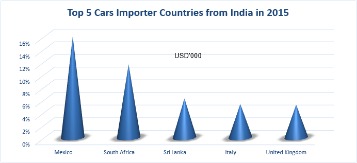

If you’re incredibly bullish or bearish, then selling covered calls isn’t a good strategy, because if the price moves way above the option’s strike price, then you’re forfeiting gains on your stock. If the stock you choose to sell increases beyond the break-even point and the option buyer decides to exercise the option, you will lose the opportunity for potential future gain. Selling covered calls is one of the most popular options trading strategies, not to be confused with a similar naked options strategy.

The company just went public and already may not be able to survive the next 12 months if it doesn’t raise more capital. The news firmly puts RIDE’s debut electric truck behind Ford’s F150, sinking shares 16% yesterday and further today – cementing our newest Profit Takeover trade on the path to asymmetric returns. This way, I won’t have to sell my stock position because the buyer can’t exercise the call.
Covered Call Option Strategy Explained
There are two scenarios for exiting a covered call at expiration, depending on where the stock price is relative to the strike price of the call option sold. If the stock price is below the strike price at expiration, the call option will expire worthless, and the option premium collected is the amount profited from the trade. At this point, a new covered call position may be initiated for a future expiration date. The buyer of the covered call has the right to purchase the underlying shares from the investor at the option strike price anytime up through the option expiration date. The investor’s long position in the asset is the “cover” because it ensures the call writer can deliver the shares if the buyer of the call option chooses to exercise the option.
Depending on the custodian of your IRA and your eligibility to trade options with them, yes. There are also certain advantages to using covered calls in an IRA. The possibility of triggering a reportablecapital gain makes covered call writing a good strategy for either atraditionalorRoth IRA. Investors can buy back the stock at an appropriate price without having to worry about tax consequences, as well as generate additional income that can either be taken asdistributionsorreinvested. In the most ideal situation, the stock will rise to exactly the strike price of $22. Then, the call won’t be in the money , meaning you get to keep your shares and the profits from that $2 increase plus the premium you collected from the covered call.
When everything is rosy and the stock market does nothing but chug a little higher every day, trade selection for covered calls may not be that crucial. In the good times, you can sometimes get by without doing your homework. It’s essential that you only write covered calls on technically and fundamentally sound companies. While the strategy typically works best with stocks that are flat or trending slightly higher, covered call writing is a flexible enough strategy that it can be profitable under most market conditions. Remember that in volatile markets, increased volatility equals increased premium income. The best time to sell a covered call is when you don’t anticipate much movement in the stock price.
Should I Write a Covered Call on a Core Stock Position with Large Unrealized Gains That I Wish to Hold for the Long Term?
Selling covered calls is best used when price fluctuations are part of your plan to hold. Premiums generate profits until that strike price is reached and sold at that strike price. A trader can only make a certain amount of money as gains, but the potential losses these executions can incur are high. As a result, investors and traders shall utilize these after careful consideration when the market is less volatile. Poor man’s covered call can be an alternative for investors looking for a cheaper, capital-efficient alternative.
- Your position can be liquidated at any time the buyer of the call decides to exercise the option to make the purchase, whether or not the sale price is a favorable one for you.
- If the price of the underlying asset slightly increases, the premium will raise the total return on the investment.
- One such options strategy that veteran traders and investors use on a day to day basis is the covered call.
- Thank you for sharing your perspective, I’ll rethink my covered call selling strategies.
- The call will expire out of the money, and you will keep your stock and the premium.
- If the underlying asset is about to pay a monthly or quarterly dividend, the short call is at greater risk of assignment if it is in-the-money.
The Dividend Kings List is even more exclusive than the Dividend Aristocrats. It is comprised of 38 stocks with 50+ years of consecutive dividend increases. The Dividend Achievers List is comprised of ~350 stocks with 10+ years of consecutive dividend increases.
You can make money writing covered calls in choppy waters, but in case of a hurricane, you definitely want to be inland. There is no rule that says you must always have an open position. Many conservative call writers, for covered call is nothing but a example, won’t even consider writing a call on a stock that’s trading below its 50 day moving average. A covered call strategy’s maximum loss is restricted to the asset’s purchase price less the option premium received.
Since one options contract represents 100 shares, you have to own at least 100 shares to be able to write a covered call. The strategy I use is referred to as rolling an “in the money” call option “up and out”. In the nearly 7 years I’ve been writing covered calls, I’ve had exactly one stock called away. This was shortly after I started writing covered calls and I did not yet fully understand how to roll an option. I roll call options “up and out” pretty frequently now; on the order of 12 to 15 times a year to prevent a stock I wish to retain from being called away. What happens if the stock price blows past the strike price but I really don’t want the shares of the stock I’ve pledged to be called away; I don’t want to sell the shares?
Open Interest – This is the number of open options contracts which also gives indication of how active a particular option is trading. Volume – This is the number of option contracts that have traded which gives you another indication of how active that particular option is being traded. Last Trade Date – Not much here other than it gives an indication of how active the trading is for this option contract. This easy-to-understand e-book, without typical financial mumbo-jumbo, teaches you in less than 30mins the real reasons why you should trade options. I have been sharing insights about the markets, proven strategies, what works, what doesn’t and many powerful trading ideas.
What Is a Covered Call? Understanding the Risks Involved
The call buyer will pay a premium, which will be received by the call seller, in exchange for this right. It is a financial word that refers to a buyer’s ability to acquire stocks, bonds, and commodities at a defined price for a set period. Since you must buy the stock, a covered call is more expensive to set up than other types of options strategies. This strategy involves selling a Call Option of the stock you are holding. Quadruple witching refers to a date on which stock index futures, stock index options, stock options, and single stock futures expire simultaneously. A must be filled order is a trade that must be executed due to expiring options or futures contracts.
A covered call consists of selling a call against shares of long stock. Typically, covered calls are sold out-of-the-money above the current price of the underlying asset. Calls that are sold closer to the stock price will result in more credit received but have a higher probability of being in-the-money at expiration.
Things We Hate About Selling Covered Calls
So, by writing out-of-the-money Calls, investors can earn some extra income on the existing corpus,” says Sneha Seth, Derivatives Analyst at Angel Broking. It involves selling a Call Option of the stock you are holding, in order to reduce the cost of purchase and increase chances of making a profit. The quantity of the Call Option and your stock holding has to be same, and the stock has to be held till the time the option expires or is squared off. In order to lock up your profits, you sell 1 call option contract with the strike price of $105 that will expire in six months .
For example, if stock is purchased at $100 and a call option is sold at the $105 strike price for $5.00, the original position’s cost is now reduced by $5.00. Therefore, the cost basis and break-even point of the long stock position is now $95. The maximum loss, on the other hand, is equivalent to the purchase price of the underlying stock less the premium received. This is because the stock could potentially drop to zero, in which case all you would receive is the premium for the options sold. We have shown that trading deep in-the-money covered calls using our unique approach is superior to conventional out-of-the-money covered calls.
Still, you will need to take certain precautions to be successful writing covered calls during a bear market. As the option expires worthless, the investor gains from a minor rise in the stock and collects the entire premium. This method is great when the stock you own has a bleak outlook, and it would be wiser to book short-term profits rather than stay holding the stock. When you possess options, you want them to move in your favor as soon as possible after you place the trade. This is due to the time-decay component of options, which means that for each day the stock do not move in your favor, you lose a small amount of money. If the option is exercised and you sell the stock, you may incur tax liabilities, particularly if you are reporting a capital gain.
To execute this, an investor who holds a long position in an asset then writes call options on that same asset to generate an income stream. The investor’s long position in the asset is the cover because it means the seller can deliver the shares if the buyer of the call option chooses to exercise. On the other hand, if the stock never exceeds the strike price during the period up to expiration, the call writer keeps the option premium and also keeps the stock in portfolio.
She spends her days working with hundreds of employees from non-profit and higher education organizations on their personal financial plans. When volatility is considered, the LEAP method becomes even more appealing. Due to the high vega of LEAPs, an increase in volatility would result in an increase in extrinsic (i.e. time value) value on a long LEAP position. After you execute a covered call strategy, one of three scenarios is likely to happen. The bot looks to purchase long stock in an uptrend and then sells a synthetic covered call.
Until its asset merger with Discovery, it had raised its dividend for over 30 years in a row. AT&T was formerly a member of the Dividend Aristocrats, a group of 65 stocks in the S&P 500 Index with 25+ consecutive years of dividend raises. The term “buy write” describes the action of buying stock and selling calls at the same time.
The current environment with stocks not in a long term downtrend and high volatility is a good backdrop for covered call ETFs. When the markets are more volatile this results in higher option premiums. In both cases, the collected option premium is a source of income. Implied Volatility – This is the expected level of volatility in the stock price during the remaining life of the option. Generally, higher volatility translates into higher option price .








